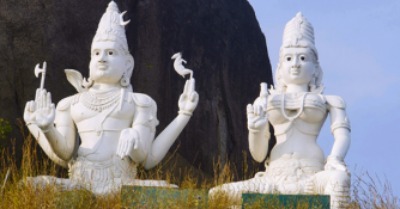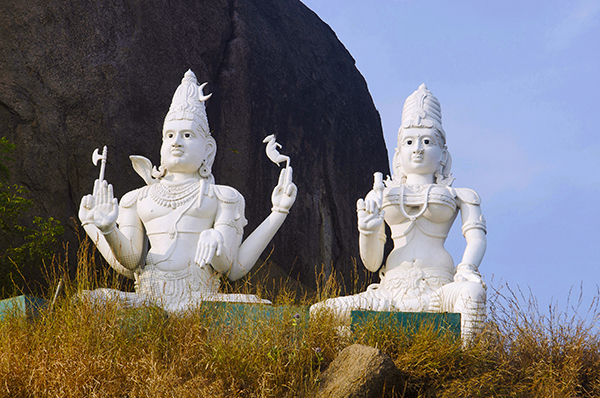A Divine Retreat at The Sacred Bhadrakali Temple in Warangal

Situated in the heart of Warangal, the cultural capital of Telangana, stands the majestic Bhadrakali Temple—a revered haven steeped in the profound significance of Hindu mythology. The temple is situated on a hilltop between the two cities of Hanamkonda and Warangal, Telangana, India.

The Kakatiya kings adopted the Bhadrakali Temple and revered Goddess Bhadrakali as their kula devata. A lake was built by Ganapati-deva nearby. The temple’s prominence waned after the Kakatiya dynasty fell to Muslim rulers. In 1950, Sri Ganesh Rao Sastri, a devoted worshipper, and Shri Maganlal, a businessman, renovated the temple.
According to local legends, the temple originally stood on the banks of the Bhadrakali Lake. Due to flooding, it was relocated to its present site, where it continues to stand as a symbol of deep reverence and spiritual devotion. Another interesting story is that the Koh-i-Noor diamond, now part of the British Crown Jewels, has a close association with the Bhadrakali Temple. Kakatiya dynasty installed it as the left eye of the Goddess.
Majestic Architecture and Design at Display
Upon stepping inside, worshippers are greeted by a sight of awe—the 2.7 mt stone idol of the eight-armed deity, Bhadrakali. With historical significance, this idol was worshipped by Chalukyan ruler Pulakesin-II in 625 AD, adding to the temple’s religious and cultural importance.
The Dravidian style architecture of the Bhadrakali Temple exemplifies the artistic finesse of the bygone era. Intricate carvings on the walls and pillars narrate stories from Hindu mythology, showcasing the skilled craftsmanship of the artisans of that time. The lion opposite the sanctum sanctorum is a sight to behold. It symbolizes the vehicle of the goddess.
A Sight for Vibrant Rituals and Festivals
Throughout the year, the Bhadrakali Temple comes alive with vibrant rituals and festivals, drawing devotees and tourists alike. One such noteworthy celebration is the Navratri festival, a nine-day extravaganza dedicated to the worship of Goddess Bhadrakali. Navratri adorns the temple premises with vibrant decorations, as traditional music and devotional chants fill the air. Devotees from all corners come to seek the blessings of the Goddess, seeking strength and courage to face life’s challenges.
Beyond its historical importance, the Bhadrakali Temple holds deep religious significance. Devotees flock to the temple to seek Goddess Bhadrakali’s blessings, which is believed to grant courage, protection, and victory.
The temple is not only a site of religious worship but also a center for cultural activities. Festivities during Navratri showcase a plethora of cultural performances, including classical dance, music, and theatrical presentations. The temple premises come alive with the rhythm of traditional art forms, as the energy transforms into a sense of community and devotion. The atmosphere during such festivals is electrifying, with cultural performances and devotional fervor.
The Bhadrakali Temple also plays a vital role in serving the local community through various social and charitable activities. The temple authorities and devotee groups actively organize initiatives such as food distribution to the needy and medical camps, showcasing their dedication to social welfare.
How to Get There?
With its excellent connectivity, Warangal offers multiple options for reaching the Bhadrakali Temple. Located approximately 150 km away, the city is well-connected to Hyderabad by road, rail, and air. Upon reaching Warangal, the temple is easily accessible by local transport, with frequent TSRTC buses and autos available for the short journey to the temple. Travelers seeking a leisurely stroll can embark on a 30–40-minute walk from the central areas of Warangal to the temple, relishing the serene surroundings along the way. The temple is a mere 5 km away for those arriving at the Warangal Station, making it a convenient choice for devotees and tourists alike.
5 km from Warangal Station, and 13 km from Kazipet Station
Travel Time via Road
30 minutes
Walking Distance
30-40 minutes from central areas of Warangal
Temple Timings
5 AM to 1 PM and 3 - 9 PM
